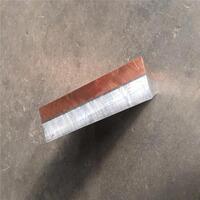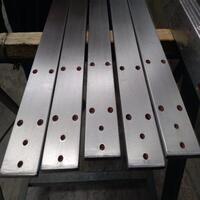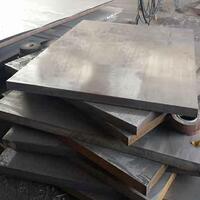1. Introduction
Ever seen a sleek modern building with shimmering copper siding or a rustic home wrapped in weathered corten steel facade? That’s metal clad in action. But ‘metal clad’ isn’t just for eye-catching exteriors—it’s also used in wiring, piping, cookware, and heavy industry. So, what exactly does ‘metal clad’ mean?

In simple terms, metal clad (or metalclad) refers to a material or structure that’s covered or layered with metal for protection, durability, or aesthetics. Whether it’s a metal clad house, an aluminum clad pipe insulation system, or even metal clad electrical wire, the concept revolves around combining metals—or metal with other substrates—to enhance performance.
2. What Does ‘Metal Clad Meaning’ Really Cover?
The phrase ‘clad metal meaning’ describes any composite material where one metal is bonded to another—like aluminum clad steel or stainless clad aluminum. This isn’t just surface-level coating; true cladding involves metallurgical bonding through processes like roll bonding, explosion bonding, or electroplating.
For example, aluminum clad stainless steel offers corrosion resistance from the stainless core while benefiting from aluminum’s lightweight and cost-effective outer layer. Similarly, titanium clad plates are used in chemical processing for their extreme durability.
Clad metals are common in aerospace (2024 T3 clad aluminum), marine (copper nickel clad), and energy sectors (inconel weld overlay). The result? Enhanced strength, thermal conductivity, or resistance without the full cost of solid exotic metals.
3. Metal Clad in Architecture: Walls, Roofs, and Facades
When people think of ‘metal clad,’ they often picture buildings. From corrugated steel facade panels to elegant zinc clad dormers, architects love metal for its longevity and design flexibility.
Popular options include:
- Corten steel siding: Known for its rust-like appearance and low maintenance; corten siding cost varies but offers decades of service.
- Zinc metal siding and zinc clad roof: Naturally patinas over time, ideal for modern designs.
- Copper siding: Develops a green verdigris finish, adding character to high-end homes.
- Colorbond standing seam and PAC Clad standing seam roof systems: Durable, watertight, and sleek, often used in commercial and residential metal clad buildings.
Vertical standing seam metal siding and exterior corrugated metal siding are also trending for their clean lines and resilience against weather.
Don’t forget details like PAC Clad coping, column covers, and HWP trim—these finishing elements ensure a polished, professional look on any metal clad structure, from sheds to skyscrapers.

4. Common Materials Behind Metal Clad Systems
Not all metal cladding is created equal. The base and cladding materials determine performance, cost, and application.
Steel remains a favorite—especially mild steel plate, carbon steel plate, and corten steel plate for structural uses. For corrosion resistance, stainless steel plate (like 316 or 304L grades) is preferred.
Aluminum options abound too: 6061 T6 aluminum plate for strength, 5052 aluminum sheet for marine use, and aluminum diamond tread plate for slip-resistant surfaces.
Other specialty plates include:
- Diamond plate steel sheets (also called checker plate)
- Perforated plate for ventilation or design
- Chrome carbide overlay plates for extreme wear resistance
- Brass plates for engraving or decorative nameplates
And yes—you can find ‘steel plate near me’ or ‘aluminum sheet for sale’ from countless distributors offering everything from 1/8 inch steel plate to thick steel plate for industrial needs.
5. Beyond Buildings: Industrial and Electrical Uses
Metal clad isn’t just skin-deep on houses. In engineering, ‘metal clad wire’—including CU clad wire or aluminum clad steel wire—is used for strength and conductivity.
Aluminum clad pipe insulation protects HVAC systems, while metal clad insulation wraps ducts for energy efficiency.
In electronics, metal clad PCBs (printed circuit boards) use metal bases for heat dissipation—though they don’t typically need baking unless specified.

Electrical codes often allow metal clad cable (MC cable) in commercial buildings, including Pennsylvania, and it can be surface-mounted. Just remember: proper grounding and box connections are essential.
Fun fact: ‘All-Clad’ cookware uses layers like stainless steel bonded to aluminum—technically a form of clad metal—but that’s different from architectural or electrical metalclad systems.
6. Choosing the Right Metal Clad Type
With so many options—from PAC Clad to standing seam facade systems—it helps to match material to purpose.
For coastal areas? Go with marine-grade alloys like 5083 aluminum plate or cupro nickel clad.
Want low maintenance and bold style? Corten steel siding delivers, though initial corten steel siding cost may be higher.
Need fire resistance or EMI shielding? Consider stainless metal sheet or nickel silver plate.
Always check compatibility: aluminum clad steel works great, but avoid galvanic corrosion by insulating dissimilar metals. And when cutting metal sheet or plate, use proper tools—metal sheet cutting requires precision to avoid warping or burrs.
7. Conclusion
Whether you’re designing a steel clad house, specifying clad metals for a refinery, or running metal clad electrical wire through a wall, understanding ‘metal clad meaning’ unlocks smarter, more durable solutions. From zinc facade elegance to the rugged reliability of boiler plate steel, metal cladding blends function and form like few other materials can. So next time you see a gleaming metal weatherboard or a PAC Clad column cover, you’ll know there’s serious engineering—and artistry—behind that shine.
Our Website founded on October 17, 2012, is a high-tech enterprise committed to the research and development, production, processing, sales and technical services of ceramic relative materials such as What. Our products includes but not limited to Boron Carbide Ceramic Products, Boron Nitride Ceramic Products, Silicon Carbide Ceramic Products, Silicon Nitride Ceramic Products, Zirconium Dioxide Ceramic Products, etc. If you are interested, please feel free to contact us.
